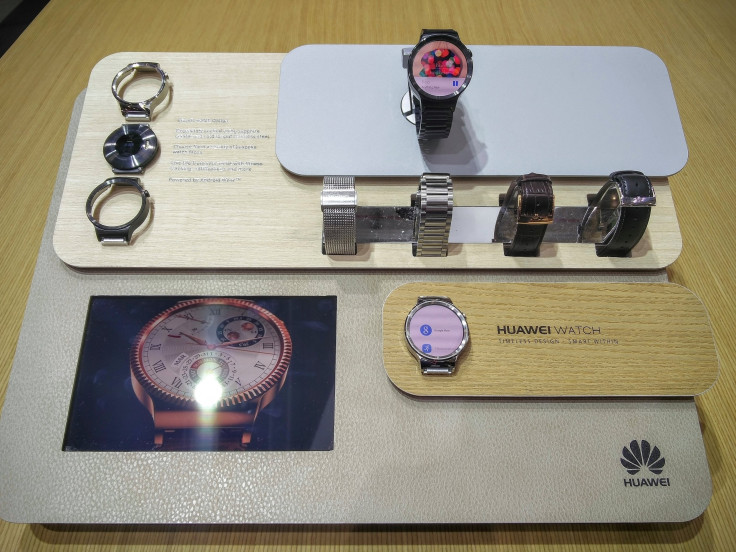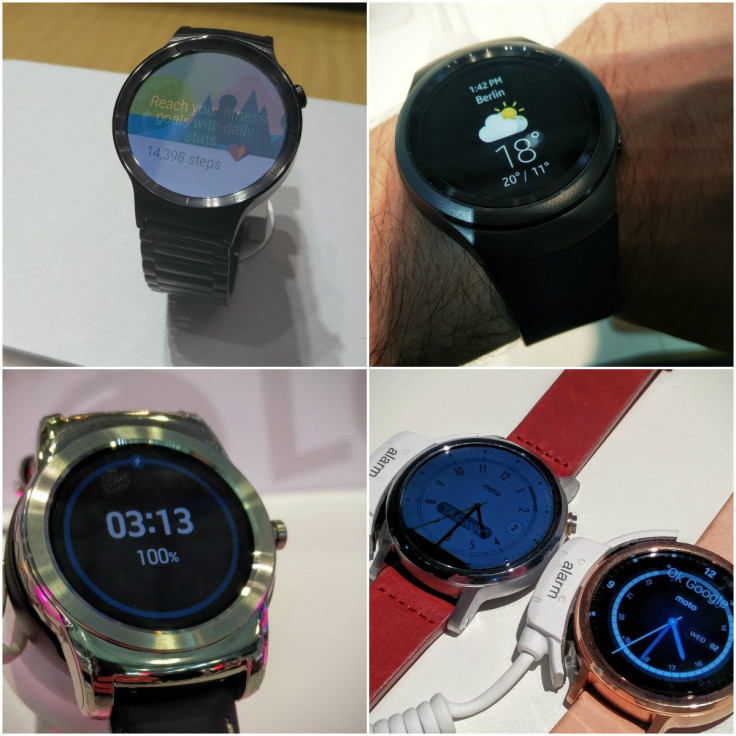Smartwatch 2.0: Stylish Entries From Motorola, Samsung, Huawei And Asus Look To Unseat Apple Watch

BERLIN -- Smartwatches are still a very young product category. It was just over two years ago that Google kickstarted the industry with the launch of Android Wear, and it wasn’t until earlier this year that the device gained mass market awareness with the launch of the Apple Watch.
Smartwatches are a very attractive proposition for smartphone companies that are seeing margins in that industry getting squeezed ever tighter (unless you are Apple, of course). Companies like Samsung, Motorola, Asus and Huawei see wearables as a new revenue stream where they can quickly turn the expertise they have gained in developing smartphones -- screen technology, miniaturization, relationships with suppliers -- into cash on their balance sheets.
The problem is that while dozens of smartwatches have been launched, so far few people are buying them. While some may say that simply means consumers don't want wearables, the experts disagree. CCS Insights analysts believe the wearable market will be worth $25 billion by 2019 and half of that will come from smartwatches.
What is more likely is that consumers just don’t want any of the wearables that have been produced so far. The manufacturers simply don’t know what the consumer wants -- and if you ever needed proof of this, remember that the new Gear S2 is Samsung’s seventh smartwatch in the space of two years.
The Gear S2 is the standard-bearer of the second wave of smartwatches that companies like Samsung and Motorola hope will finally click with customers. It’s not hard to guess which way the smartwatch trend is going; just look at the images below and it’s pretty obvious.

The Smartwatch As Fashion Item
Aside from circular faces, the tech companies are also focused almost entirely on the look and design of the devices rather than the features and software. The mass market simply does not want to wear a smartwatch that looks like a smartwatch. Consumers may want the features, but they want them to look like traditional watches. This, it seems, is the consensus the major smartwatch manufacturers have come to in the last six months.
The Gear S2 is an exceptional piece of design and engineering. It is slimmer and lighter than many traditional watches and looks elegant and simple. The Huawei Watch is chunkier but looks impressive and will appeal more to men than women. The new Moto 360 has three sizes, a sports version and up to 300 combinations of cases, colors and straps. The Asus ZenWatch 2 may buck the trend slightly by retaining its square design, but this is still an elegant and stylish device with fashionable straps and colors available.
At IFA 2015 in Berlin, where all these watches are on display, you can clearly see the focus on fashion in how they are being presented. Samsung has a display case for its Gear S2 that would not be out of place in Harrods, while Huawei, as you can see above, is positioning its watch as a premium product.
Battery Problems
So it seems that the manufacturers have addressed one major pain point for consumers, but more remain, and they will be much more difficult to address. The main one, of course, is battery life. The second wave of smartwatches have all claimed to have improved over the dire performance of the first generation, but that will be of little comfort to those who have been stung by similar claims. The only company that seemed to underplay the battery life of its smartwatch was Apple, with its Watch typically providing much more life than the single day Apple promises.

It is a smart move and one that other companies have picked up on, but until these products can be tested we won’t know. But when a Motorola representative reveals that its promised two-day battery life is possible only in ambient mode when everything is basically switched off, it doesn’t sound good.
Another pain point is software. Because of how small the screens are on devices like the Gear S2, getting the interface right is crucial to the watch's success. While most of the manufacturers are hamstrung because they are using Google's Android Wear, Samsung has looked to do things a bit differently, using its own Tizen platform on the watch. It looks good, but it means that getting a full range of apps on the device is unlikely.
Android Wear, meanwhile, is still a bit of a mess, and Google needs to make the interface much more intuitive and simplistic if it wants to appeal to the mass market, though the fact it is much more customizable -- in terms of watch faces at least -- than the Apple Watch; that may convince some to go for devices from Motorola, Asus or Huawei.
It is hard to tell if the smartwatch industry will go the way of the smartphone, with Apple grabbing the vast majority of the profit from those expected huge revenues, but the second generation of devices from Apple's competitors at least gives consumers many more appealing options.
© Copyright IBTimes 2025. All rights reserved.




















